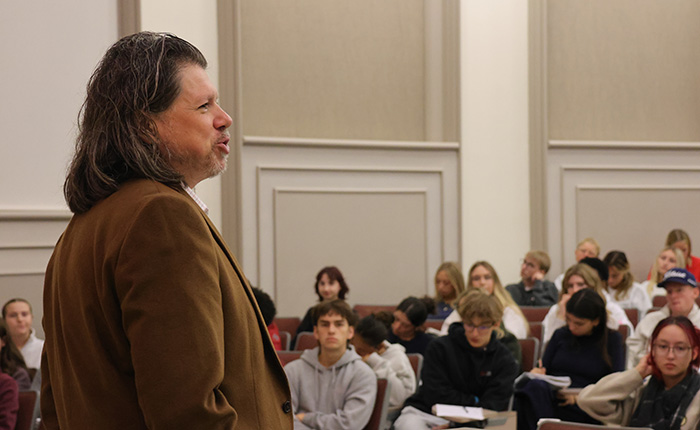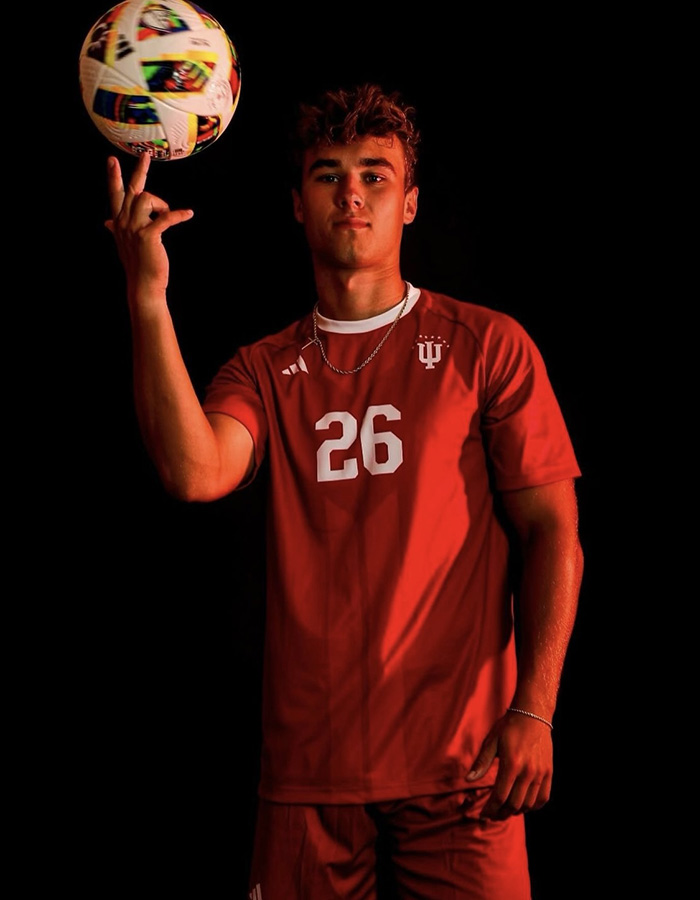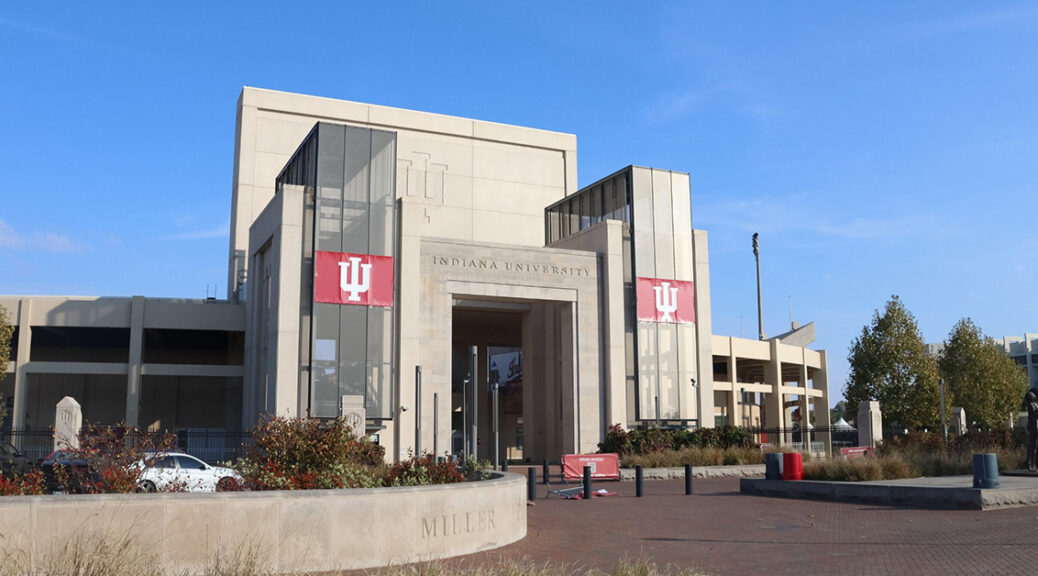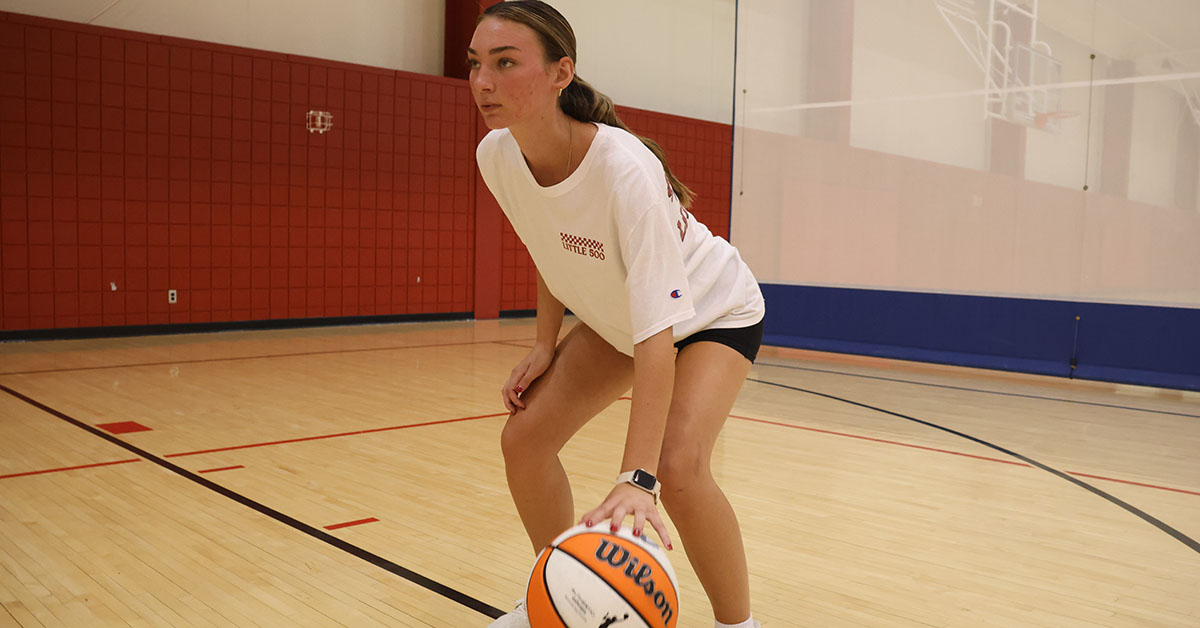NCAA – NIL Legislation Enables Compensation For Student Athletes
By Alexandra Drago, Eric Perkins, and Demi Heinz
BLOOMINGTON, Ind. (Nov. 5, 2024)
NIL – a student-athlete compensation that was passed by the Supreme Court in 2021 and has completely changed the game in high school and college athletics.
On a Saturday afternoon, in the windy hours of October in Bloomington, IN, people filled the streets of the town with friends and family, laughing and enjoying each other’s company. Just outside the campus of Indiana University, in the heart of the college town, we met up with local IU soccer athletes, senior Justin Weiss and freshman Drew Gaydosh, at Inkwell Cafe to discuss the effects that NIL has had on them since it went into full force.
It wasn’t unusual to see these D1 athletes roaming around the streets of Bloomington. As we sat down with Weiss and Gaydosh, many students smiled and waved at them, showing how being an athlete at a D1 university has its perks, like being seen as a “campus celebrity.” They were more than happy and welcomed to talk about their life around athletics that takes place outside of the field.
“It really is a different and crazy experience here, being an athlete and all. We have training in the gym at 6:00 am, go to class, and then three-hour practice. On top of school and soccer, then we have to answer emails and Zoom meetings with brands and companies through NIL,” Gaydosh said.
In addition to having very different experiences than the average college student, collegiate athletes also profit financially from what they do outside of school due to their prominence in the media. Their choices and experiences at college or university are directly impacted by these NIL deals.
“NIL has changed my college experience in terms of broadening my network. The people I meet and work with due to the deal help increase awareness of other resources,” Weiss said, a forward on Indiana University’s soccer team, expressing his experiences within NIL.

As a senior, Weiss experienced NIL firsthand during his freshman year when it got passed and went into effect. Weiss spoke on how NIL has positively affected him as a college athlete in terms of reaching the eyes of more companies and brands. With the ability to monetize their NIL, athletes can now engage in endorsement deals, social media promotions, and personal appearances. This has led Weiss to achieve more opportunities given to him through his social media deals, such as how NIL has given athletes the opportunity to develop their own brands. “The way I have built my brand is continuously posting on social media with team stuff and individual actions throughout the season,” Weiss said.

However, being a good athlete is one thing, but being able to advertise yourself in the NIL light is another. Dr. Clavio, professor of media at Indiana University, spoke with university students during a press conference on NIL and what it means to be a good athlete in NIL circumstances. “The other part of NIL is the athletes that are good at media, who understand how to utilize social media, who bring in a social media audience…For a lot of businesses who would want to contract with an athlete from an NIL perspective, a lot of it is what market are you bringing to the table,” Dr. Clavio said. Apart from being good athletes, collegiate athletes have to also learn the other side that comes with playing college sports. “As this is my first year, I am starting to navigate my way through NIL and brand deals. I’ve learned that the more I post online through apps like Instagram and Twitter, the more brands reach out to me. It helps get my exposure out into the world,” Gaydosh said. Gaydosh went on to talk about how impactful social media has been for him.

Athletes used to be frequently viewed as nothing more than spokespersons for their schools, with little control over their public identities. They may now develop their own identities, interact with fans, and provide content that appeals to their target market. In addition to increasing their visibility, this change gets them ready for future employment in sports or other industries. Athletes can acquire useful abilities that will help them long after their college careers are over by learning how to handle the challenges of branding and marketing.
As we wrapped up our discussion, the voices of the collegiate athletes were full of passion and determination. In addition to their happiness at the opportunities NIL has provided, they talked about the burden of responsibility that goes along with them. Their stories are filled with goals to achieve financial independence and build a brand that truly embodies their identities. However, there were concerns about how to cope with this new environment, the pressure to perform well on the field and in the marketplace, and the fear of losing the essence of what it means to be a student-athlete. It was clear how strong and how well aware they are of the difficulties they can possibly face. Their encounters with NIL present a turning point in collegiate athletics that can ultimately change the basis of their goals and aspirations. As 2024 becomes the third official year since the NIL was implemented, we can only hope that more positive efforts will be implemented for these collegiate athletes in the future.
An interview was conducted throughout Indiana University discussing the ongoing debate on the ruling of NIL. Many perspectives were highlighted on the topic of student-athletes being compensated.
###






